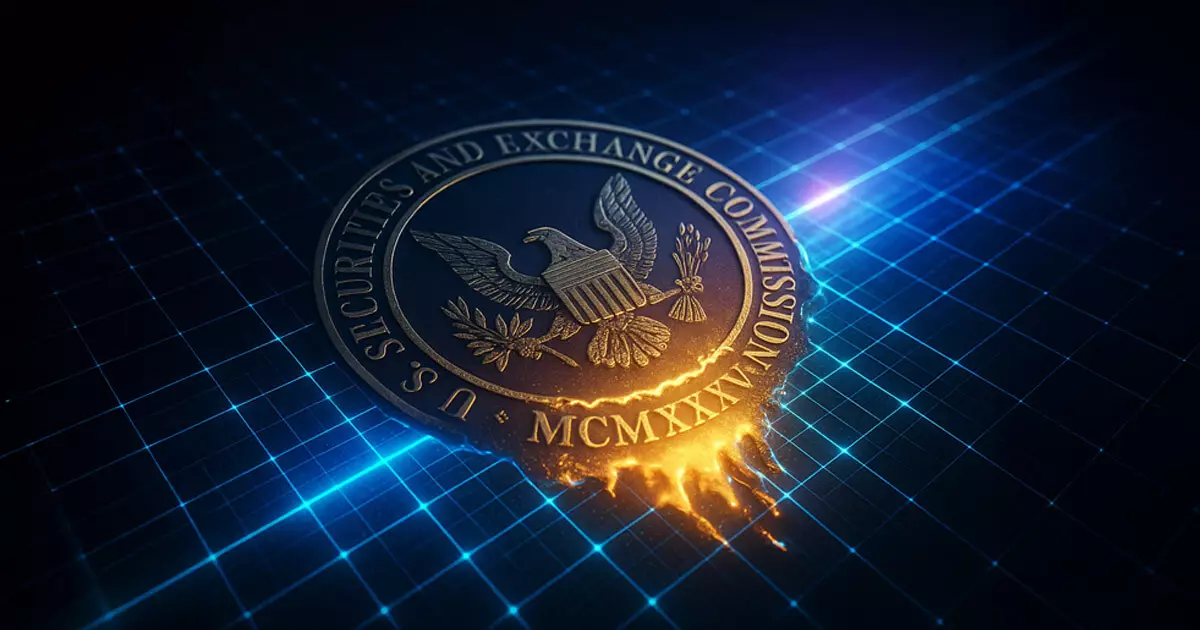The recent decision by the U.S. Securities and Exchange Commission (SEC) to rescind 14 proposed rules, particularly those targeting the burgeoning crypto industry, marks a significant pivot in regulatory stance. This move unveils a recognition that a stringent regulatory framework may stifle innovation rather than promote it. The previous administration’s approach under Gary Gensler was robust, aiming to bring oversight to a sector that is often seen as a ‘wild west’ of finance. However, such a heavy-handed logic only led the industry to question whether the SEC sought to police legitimate players or manage them out of the market altogether.
The Loss of Crucial Rules: A Double-Edged Sword
Among the rescinded rules were those that sought to redefine what constitutes a securities exchange in relation to decentralized finance (DeFi) platforms and impose stringent custody requirements for digital assets. By expanding the definition of securities exchanges to encompass DeFi platforms, the SEC would have effectively created hurdles that could have suffocated innovation and engagement in this transformative technology. Meanwhile, the proposed custody rules threatened to restrict asset storage options, leaving only a few institutions eligible to safeguard digital assets. This could have hindered the participation of responsible and capable operators in the crypto custodianship space, consolidating power in the hands of a select few.
Implications for Market Innovation
Critics of the abandoned proposals can argue rightfully that they represented unnecessary overreach. The notion that rules designed for traditional finance could be seamlessly applied to an entirely new species of financial instruments disregards the unique dynamics of the crypto ecosystem. By rolling back these measures, the SEC demonstrates an acknowledgment of the need for tailored regulation that doesn’t stifle innovation while still offering a protective framework for investors. This evolving mindset is crucial at a time when many entrepreneurs are looking to the crypto space as a viable avenue for creative financial solutions.
Backing a New Era of Pro-Crypto Regulation
With the new SEC leadership under Chair Paul Atkins, we’re seeing concrete steps towards establishing a supportive environment for cryptocurrency development. This shift mirrors President Trump’s deregulatory initiatives aimed at reducing compliance burdens across various markets. As the SEC drops lawsuits against crypto companies—a move designed to signal a curvature from a regulation-by-enforcement approach—the tone has clearly shifted towards collaboration and guidance rather than confrontation.
A Delicate Balance of Protection and Progress
While it’s easy to celebrate the SEC’s softer stance, we must remain vigilant. The balance between protecting investors and fostering an environment ripe for innovation is precarious. The potential for regulatory confusion still looms large, as the absence of clear frameworks can create uncertainty. Companies and investors in the crypto landscape yearn for clarity and guidance to navigate the complex terrain. Thus, it becomes paramount that the SEC moves forward with a clear, thoughtful regulatory framework that supports innovation while adequately protecting investors from potential risks.
Approaching crypto with a more constructive regulatory lens could lead to a renaissance in digital asset development, inviting not just more players into the market but also driving essential conversations around safety, transparency, and ethical standards in the burgeoning financial landscape. The SEC’s recent moves may signify just the beginning of a critical reevaluation of how we govern and engage with the forces of financial technology.


Leave a Reply